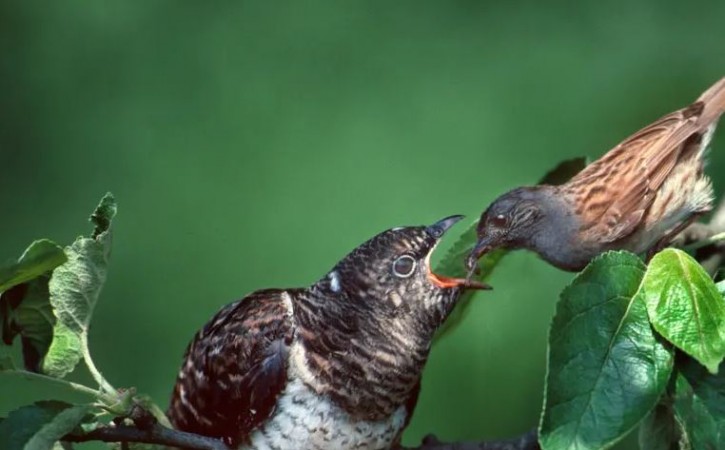
Introduction
Climate change is one of the most pressing challenges of our time, and its impact on wildlife and biodiversity cannot be overlooked. As global temperatures rise and weather patterns become more erratic, ecosystems around the world are facing unprecedented changes. In this article, we will explore the profound consequences of climate change on wildlife and discuss the importance of protecting Earth's biodiversity in the face of these challenges.
1. The Significance of Earth's Biodiversity
Biodiversity refers to the variety of life on Earth, including the immense number of species, ecosystems, and genetic diversity. It plays a crucial role in maintaining the health and stability of our planet. Wildlife, in particular, contributes to the balance of ecosystems by playing various ecological roles such as pollination, seed dispersal, and pest control.
2. Understanding Climate Change
Climate change is primarily caused by human activities, including the burning of fossil fuels, deforestation, and industrial processes. These activities release greenhouse gases into the atmosphere, trapping heat and leading to global warming. The consequences of climate change are far-reaching and impact all aspects of life on Earth, including wildlife and ecosystems.
3. Rising Temperatures and Habitat Loss
As temperatures continue to rise, many species face significant challenges in adapting to their changing environments. Wildlife populations that are already living near their thermal limits may struggle to survive. Additionally, the loss of habitat due to rising sea levels and increased desertification further exacerbates the problem, leading to the decline of many species.
4. Disruption of Migration Patterns
Climate change disrupts the natural migration patterns of many wildlife species. Changing temperatures and altered weather patterns can affect the availability of food and water along migratory routes, leading to reduced breeding success and population declines. This disruption can have cascading effects on entire ecosystems, as species rely on each other for various ecological interactions.
5. Ocean Acidification and Coral Bleaching
The world's oceans are also significantly impacted by climate change. Increased carbon dioxide levels in the atmosphere are absorbed by the oceans, causing them to become more acidic. This phenomenon, known as ocean acidification, poses a grave threat to marine life, including coral reefs. Coral bleaching, triggered by higher water temperatures, further endangers these delicate ecosystems, resulting in the loss of biodiversity and the collapse of marine food chains.
6. Impacts on Polar Regions
Climate change has particularly severe consequences for polar regions. The Arctic and Antarctic ecosystems are undergoing rapid transformations, with shrinking ice caps, melting permafrost, and dwindling food sources. Iconic species like polar bears and penguins are facing unprecedented challenges as their habitats vanish, making it difficult for them to find food and reproduce.
7. Threats to Endangered Species
Endangered species are especially vulnerable to the impacts of climate change. Many of these species already face significant threats such as habitat loss, poaching, and pollution. Climate change adds an additional layer of pressure, pushing these species closer to the brink of extinction. Efforts to protect and conserve endangered species must be coupled with effective climate change mitigation strategies.
8. Adaptation and Resilience in Wildlife
While climate change poses immense challenges for wildlife, some species demonstrate remarkable adaptability and resilience. Evolutionary processes, such as natural selection and genetic adaptation, enable certain species to survive and even thrive in changing environments. Understanding these mechanisms and implementing conservation measures can help safeguard the resilience of wildlife.
9. Conservation Efforts and Mitigation Strategies
To protect Earth's biodiversity in the face of climate change, concerted conservation efforts and mitigation strategies are essential. These include the establishment of protected areas, habitat restoration projects, and sustainable land and resource management practices. Conservation organizations, governments, and local communities play a crucial role in implementing and supporting these initiatives.
10. The Role of International Cooperation
Addressing the impact of climate change on wildlife requires global cooperation. International agreements and collaborative efforts are crucial to tackle this multifaceted issue. Cooperation among nations can facilitate the sharing of knowledge, resources, and best practices to mitigate the adverse effects of climate change and protect biodiversity on a global scale.
11. The Importance of Public Awareness
Public awareness and education are key components in addressing the impact of climate change on wildlife. By raising awareness about the consequences of climate change and the importance of biodiversity, individuals can make informed choices and support conservation efforts. Engaging the public through outreach programs, media campaigns, and educational initiatives is vital for building a sustainable future.
12. Promoting Sustainable Practices
Individual actions also play a significant role in protecting wildlife and mitigating climate change. Adopting sustainable practices such as reducing carbon footprints, supporting eco-friendly initiatives, and making conscious consumer choices can collectively make a substantial impact. By embracing a more sustainable lifestyle, individuals can contribute to the preservation of Earth's biodiversity.
Conclusion
Climate change poses a significant threat to wildlife and Earth's biodiversity. Rising temperatures, habitat loss, disrupted migration patterns, and the acidification of oceans are just a few of the challenges facing wildlife in a changing world. However, through conservation efforts, international cooperation, public awareness, and individual actions, we can protect Earth's biodiversity and ensure a sustainable future for all species.
Hottest Hair Trends of 2023: Embrace the New Era of Stylish and Chic Hairstyles
The Timeless Beauty and Benefits of Earthen Pots
Indore Shocker! 15 newborns died after drinking bad milk in MTH hospital